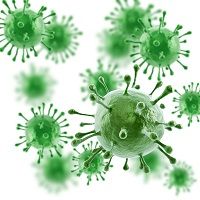Article
New Infectious Disease Detection System 10,000 Times More Sensitive Than Any Other
Author(s):
Not only has "the world's most sensitive test to detect and diagnose infectious disease" been developed, but it has the potential to become a doctor's office staple.

Not only has “the world’s most sensitive test to detect and diagnose infectious disease” been developed, but it has the potential to become a doctor’s office staple.
A team from McMaster University has devised a way to detect potentially deadly superbugs — such as hepatitis C, C. difficile, and methicillin-resistant Staphylococcus aureus (MRSA) – with minimal fragments. The technology is able to pick up on the pathogens from metabolites, proteins, or DNA pieces.
“The test has the best sensitivity ever reported for a detection system of this kind — is it as much as 10,000 times more sensitive than other detection systems,” one of the authors John Brennan, director of McMaster’s Biointerfaces Institute, said in a news release.
The biosensing approach uses a DNA amplification strategy called rolling circle amplification (RCA). According to the report on Angewandte Chemie International Edition, the molecular device can be programmed to switch on with DNA single-stranded aptamers when a certain virus shows presence. By including hyper-branched RCA (HRCA), the team was able to amplify sensitivity that has “a limit of detection that is several orders of magnitude lower than the dissociation constant of the aptamer.”
The method may be complex, however, the means to carry out the process are not. The test can be run at room temperature with simple equipment.
“This invention will allow us to detect anything we might be interested in, bacterial contamination or perhaps a protein molecule that is a cancer marker,” said another author Yingfu Li, a professor in the Departments of Biochemistry and Biomedical Sciences as well as Chemistry and Chemical Biology.
Although a time range was not indicated, Li said that the test works within a relatively short period of time. The team is already taking the next step by moving the test onto a portable paper surface so that no lab instruments will be required and the strategy can be used in an ordinary doctor’s office. Additional tests could be developed from research that target other illnesses and conditions.
“This will be the foundation for us to create future diagnostic tests,” Li concluded.





